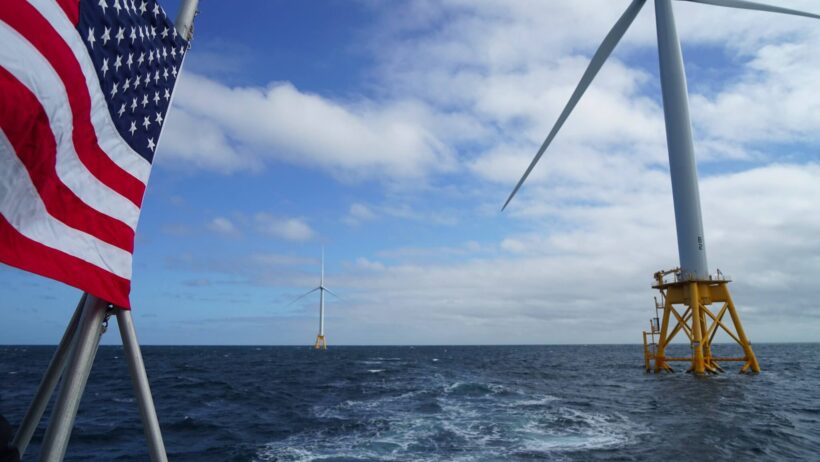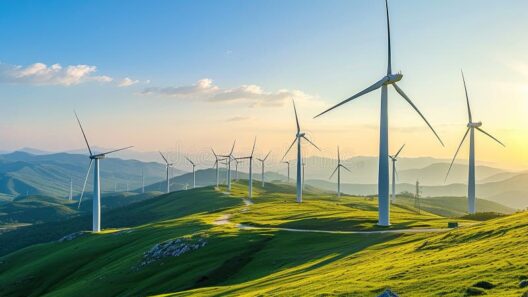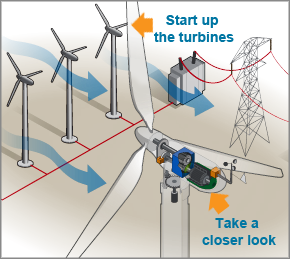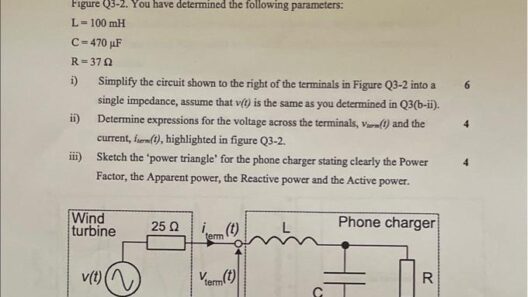The emergence of offshore wind energy represents a paradigm shift in the renewable energy landscape. As coastal regions grapple with energy needs and climate change, the potential of harnessing wind power from the ocean becomes increasingly crucial. This article delves into the intricacies of offshore wind energy, exploring its mechanisms, benefits, challenges, and potential future developments in coastal areas.
Understanding offshore wind energy is foundational to appreciating its role in the energy transition. Offshore wind farms are installations that generate electricity by utilizing wind turbines situated in bodies of water, primarily oceans and large lakes. Unlike their onshore counterparts, offshore turbines benefit from stronger and more consistent wind currents, making them an efficient source of renewable energy.
Offshore wind farms typically consist of multiple turbines, connected to one another and to the electrical grid through an elaborate network of underwater cables. The turbines are installed on the seabed, either using fixed foundations for shallow waters or floating platforms for deeper waters. This adaptability allows offshore wind farms to explore vast areas with varied water depths, optimizing energy generation.
The transition to offshore wind energy is underpinned by the pressing need for sustainable energy sources. With the impacts of fossil fuel consumption evident in rising sea levels and extreme weather events, offshore wind presents a clean alternative. According to research, offshore wind could supply over 10% of the world’s electricity by 2040, substantially mitigating carbon emissions and fostering energy independence.
One cannot overlook the diverse types of offshore wind technology that have emerged as a focal point in the energy discourse. The most prevalent forms include:
Fixed-bottom turbines
These traditional turbines are anchored to the seabed and are most effective in shallow waters, typically up to 60 meters deep. The stability offered by fixed foundations allows these turbines to withstand harsh marine conditions, making them a reliable choice for many regions.
Floating turbines
Innovative floating turbine technology extends the reach of offshore wind energy into deeper waters, where fixed structures are infeasible. Floating wind farms, tethered to the seabed by chains, provide greater versatility in site selection, opening up new areas for development. This technology is particularly promising because it allows for larger wind farms with fewer logistical challenges.
Power generation from offshore wind is generally more efficient than land-based alternatives. Wind speeds are higher and more consistent over ocean waters, enabling turbines to operate at maximum capacity for longer periods. Moreover, the substantial size of offshore turbines, often towering over 200 feet, enhances their ability to capture wind energy effectively.
The advantages of offshore wind energy extend beyond mere efficiency. Environmental considerations play a significant role in promoting offshore projects. Unlike fossil fuel extraction, offshore wind farms produce no emissions during operation, significantly lowering the carbon footprint associated with energy production. Additionally, the establishment of wind farms has been found to improve marine ecosystems through the creation of artificial reefs, providing habitats for various marine species.
However, the evolution of offshore wind technology is not without its challenges. The initial capital investment for offshore installations is substantial compared to land-based projects due to costs associated with construction, maintenance, and logistics. Furthermore, the transmission of generated electricity to the mainland poses technical obstacles, requiring advanced infrastructure and innovative solutions.
Another critical aspect pertains to environmental impact assessments (EIAs), which are crucial in addressing the potential ecological effects of offshore wind farms. Factors such as noise pollution during construction and the risk to seabird populations must be meticulously evaluated to ensure sustainable development practices.
Despite these hurdles, the trajectory for offshore wind is optimistic. Governments worldwide are increasingly recognizing the importance of diversifying energy sources and reducing reliance on fossil fuels. Notable commitments have been made, such as ambitious targets set by countries like the United States, the United Kingdom, and Germany, aiming for significant expansions in offshore wind capacity within the coming decades.
As methodologies and technologies continue to advance, the tide is shifting towards a more robust offshore wind industry. Enhanced turbine designs, improved materials, and innovative installation techniques are progressively demonstrating that offshore wind is both economically viable and environmentally sound. The ongoing development of supply chains and workforce training programs is also instrumental in bolstering this industry’s growth, paving the way for job creation and economic revitalization in coastal communities.
Looking ahead, the potential for offshore wind energy is expansive. Emerging economies are beginning to explore this avenue, keen to tap into the sustainable energy source while fostering energy independence. Furthermore, the integration of offshore wind with other renewable technologies, such as solar power and energy storage solutions, presents an exciting synergy that could revolutionize energy systems.
As the world continues to turn toward renewable sources, offshore wind energy stands at the forefront of the clean energy revolution. It symbolizes a harmonious union of technology and nature, capable of meeting future energy demands while preserving the planet. To realize this potential, concerted efforts must be made in research, innovation, and policy support, ensuring that offshore wind energy becomes a keystone in our efforts to combat climate change and secure a sustainable future.







